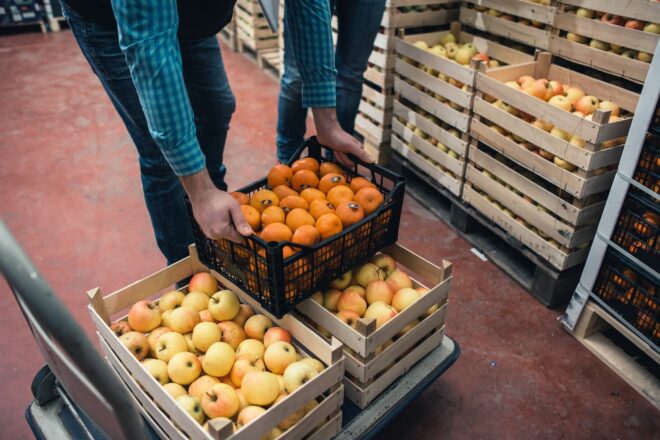5 payment technology trends to watch in 2024
Editorial Team
4 min read
Spotting which trends are fads and which are here to stay can be tricky. Innovations continue to reshape payment industry trends with accelerated adoption of mobile wallets, buy now, pay later services, and the digitization of B2B payments.
Underpinning the adoption of these payment technologies is the consumer demand for greater flexibility and convenience during purchases. Smartphone owners–especially younger digital natives–expect transactions that are swift and virtually effortless.
Experts are predicting that this desire will continue to impact payments in 2024. As you look ahead this year, consider these five payment technology trends that could impact your small business—and how you can prepare your business to capitalize on these opportunities.
1. Digital wallets go mainstream
Digital wallets are virtual versions of physical wallets. Apple Pay® and other digital wallets store payment methods such as credit and debit cards, bank account information, and even gift cards in an app or browser that can easily be accessed to make a payment.
According to a recent survey, more than half of Americans use digital wallets and apps to pay for purchases. Over 70% said they’d make digital wallets their primary method for shopping and another 62% said they would for travel.
2. P2P goes P2B
You may have heard of peer-to-peer (P2P) payment options like PayPal, Venmo, and Zelle that make it easy to send money to your friends and family. Many consumers use P2P payments to make quick transactions, like splitting a check at a restaurant.
Businesses can now use these apps to accept payment from their customers, opening a whole new market of users you can tap into. According to eMarketer, consumers of all ages are using smartphones to drive adoption of Zelle, Venmo, and the Cash app. By the end of 2025, more than 60% of GenZ digital natives are expected to use these apps for transactions.
How can you accept P2P payments at your business? We’re excited to work with PayPal and Venmo to give merchants a way to accept payments via QR code directly from your Clover devices. Customers simply scan a QR code, confirm the payment total, and receive confirmation of successful payment. Adding this new payment technology could be a small change that nets a big competitive advantage for your company.
3. eCommerce goes social
You’ve probably seen them–those short videos that display in your social feeds, on Instagram, TikTok, and before a YouTube video or an ad that runs on Facebook, X, or even LinkedIn. Turns out selling products on social media has become a big thing–and many merchants are reaping the benefits of social commerce.
In fact, total social commerce sales are expected to top $3 trillion globally by the end of 2026. So, if your business, products, or services aren’t on social media already, now’s the time to consider taking them social. What’s more, Clover makes it easy with its eCommerce solutions and apps like Zoomifi’s Social Branding, BuyFi’s BeSocial, or Order with Google. With Clover, you can take your business online and on social easily and quickly.
4. “Siri, pay my bill”
That’s right: voice payments are one of the latest ways to pay. Stemming from the demand for contactless payments, Google, Apple, and Amazon are all developing technology that will enable voice assistants to pay for things. Google offers one of the most common voice-activated payment options. It integrates Google Pay with Google Assistant, with a simple command prompting the app to set up a transfer for review and confirmation.
Voice payments are on the rise in the US. Most voice payments are limited to minor eCommerce transactions, but as machine learning becomes more advanced, experts predict that voice assistants will be used to complete more expensive, complicated transactions, reaching USD 17303.49 million by 2028.
5. Everyone loves digital gift cards
Gift cards are going omnichannel, to the delight of both customers and merchants alike. In 2024, customers now regularly expect a gift card purchased in-store will be honored online and vice versa. And, for most merchants, there’s simply no downside to offering a digital gift card.
Digital gift cards can have the benefit of reducing fraud and boosting sales, not to mention the other advantages that traditional plastic gift cards can offer. Gift cards help match unique inventory with those customers who want them. They help increase foot traffic and bring in new customers, as well as offer a way to reward loyal customers. And, by adopting the payment technology of digital gift cards, merchants can provide a seamless shopping experience.
These are just a few of the trends that are shaping up to disrupt the payment experience in 2024. As we look ahead this year, we expect customers will continue to shop at retailers, restaurants, and service providers who accept most popular payment types including convenient, flexible ways to pay, like contactless payments, QR codes, and all the traditional payment options.
Related Posts
Full Service Restaurants (FSR)
Finding the best suppliers for your restaurant: A simple guide
6 useful apps for boutique owners and small retail businesses
Popular Topics
Stay In Touch
Sign up and learn more about Clover.
Thank you for your subscription!
Recent Stories
- How to evaluate employee performance like an enterprise company
- Dropshipping: What it is & why it might be smart for your small business
- What you need to know about automatic gratuity laws for restaurants
Please share your contact information
to access our premium content.
Thank you for sharing your contact information.
Download Now





